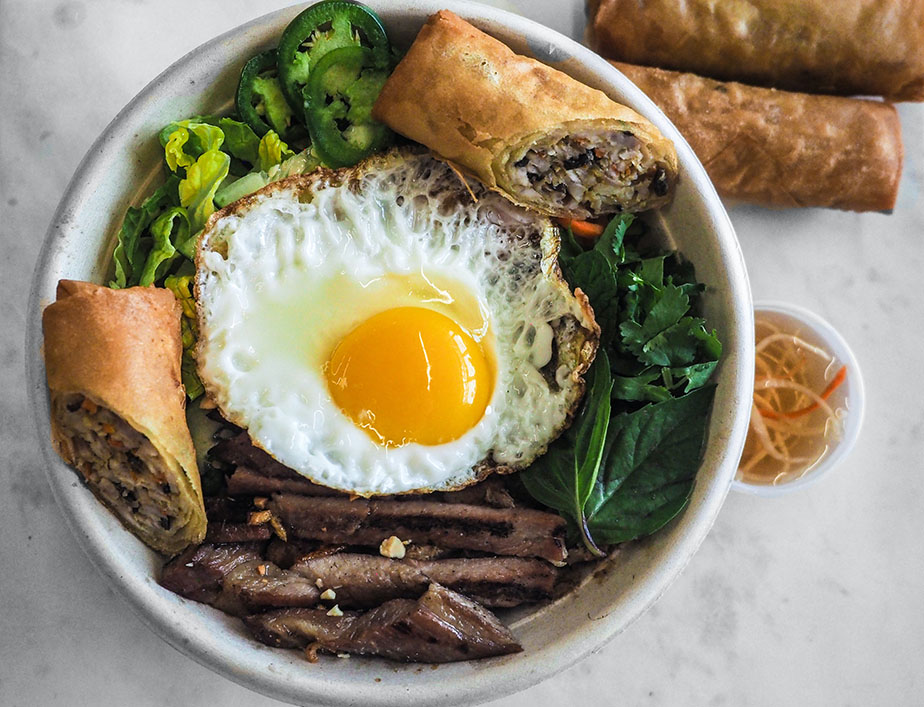By: Chi De Jesus
These days bring truth to the old saying – “Necessity is the mother of invention.” Because during these times of lockdowns and quarantines, we must be smart and creative with our choices. Thousands of people are getting laid off and the working populace getting pay cuts due to all businesses going on a downward spiral.
The kitchen is the heart of the home and also one of the major sources of our daily expenditures and food is on the top of that list which, sadly, is also the source of a lot of wastage.
So before you chuck all those uneaten food in the bin, check out what The Australian Filipina has listed down here to give you an idea or at least inspire you to make your own concoctions. Please note that the list is in order of the most used and also most thrown away.
RICE
If your taste buds haven’t totally forgotten the wonderful comfort that cooked rice provides us as the canvass for all the delectable viands that we eat, then for sure it’s always present on the dining table. It’s also good that it’s very versatile. Here are ways to re-invent left-over rice:
– Take out the clumps, season with salt or soy sauce, and fry in olive oil and garlic to make fried rice. To jazz it up a little, add slivers of seaweed sheets or minced carrots and peas and top it up with scrambled egg and left-over bacon. If you want to make it healthier, sprinkle a tablespoon of turmeric to help you with your gout problems or sore muscles.
– Now that winter is coming, you can use your left-over rice to make rice porridge – add chicken to make heart-warming “Arroz Caldo.”
– You can also compress your rice with cheese and bread crumbs, dip it in whisked egg for nice rice balls, reminiscent of the Italian Arancinis.
BREAD
Another source of carbs that usually goes to waste when we forget it is the bread tin or the ref. Now, don’t worry when it turns rock hard. There are ways to revive your bread to avoid the bin sentence:
– Get your hardened bread and slice them into smaller pieces to fit into your food processor. This can be used as a topping on your baked dishes and a thickening agent for heavy sauce dishes.
– If your kids don’t like eating the bread edges, you can gather them and store them in the refrigerator. When making salads, you can cut them into pieces and fry them in light olive oil and serve them as croutons.
– If you’re feeling a little posher, use your left-over flatbread in making French onion soup.
– If you want to prepare something for an afternoon snack, transform left-over bread to a savoury pudding.
MEAT
Since we eat our meats already subjected to different cooking styles based on the dish, it’s hard to dissect the dish and separate the ingredients so, I sought the recommendation of a food expert – Century Pacific’s Test Kitchen Head, Chef Donna Morales (IG: @donutbai). These are some of her suggestions:
– For any meat dish with tomato sauce or gravy, top over rice then add melting cheese and some parsley on top, bake until heated through to create baked rice deluxe.
– For left-over rotisserie chicken, flake chicken meat then add to macaroni soup or chicken noodle soup. Mix with mayonnaise, celery, onions, salt, and pepper, fill into bread or flour tortilla with lettuce to create a simple chicken salad sandwich or chicken salad tortilla wrap. You can also add these shreds to boiled and diced potatoes to create chicken potato salad – just add mayo, chopped scallions, and season with salt and pepper.
– Left-over fried or grilled fish can be flaked and mixed with chopped carrots, scallions, oyster sauce, flour or cornstarch, egg oyster sauce, and sesame oil. Fill into spring roll wrappers, fry, and serve with sweet chili dip or sriracha to make Asian fish rolls.
My mom would usually fry leftover milkfish from a “paksiw” dish (fish in sour soup) and the result would always be a savoury sour fried bangus that’s good with fried rice. Always remember that meat bones can all be used to create stock. Just put all the bones and discarded parts in a pot of boiling water and let it boil to get the essence of the bones. Doing this saves you from buying bouillons or packed stocks from the grocery.
VEGETABLES
This is a bit tricky because veggies lose their crunchiness and texture when cooked. I sought insights from an old friend, who’s trained in sustainable farming, a home cook, and a food blogger, Mia Estolano- Levert (IG:@be_with_mia/website: bewithmia.com) for her, proper handling of produce is a must in keeping the integrity of the veggies. Here are some of her ideas:
– Add soy sauce, hoisin or teriyaki sauce, sesame oil, or even honey to lightly stir fry left-over veggies. Then put them on top of your rice to create a quick rice bowl.
– If you’re a fan of scrambled eggs, you can toss all your left-over veggies in an oven-proof saucepan or a well-seasoned cast-iron skillet until they are soft. Then pour in a mixture of mixed eggs and grated cheese over the sautéed veggies. When the sides are setting put it in the oven at a low-temperature setting for at least 2 minutes or till the top turns golden brown. The result is a savoury frittata. This is a good dish for left-over veggies that have already been cooked.
– If you’re a fan of instant ramen you can add your left-over veggies on top of your noodles, add a hard-boiled egg for a full meal, and a much healthy treat.
– Mia says she’s also fond of making “garbage soup” where she chops and dices all left-over veggies and drops them in a broth (chicken, beef, veggie) for a healthy soup. You can also add tomato sauce, cream/milk, and cheese to make it healthier.
This reminds me of the history of one of my favourite pasta dishes, the puttanesca. Restaurant owners in Italy used to put cook their left-overs together and add to their left-over pasta which they serve to prostitutes roaming the streets going home after a day of hard “work.”
To make sure that all your left-overs are in good condition, always use serving spoons when eating, and immediately store them in leak-proof containers so you can use them when the need comes. This also allows you to delay food runs to the grocery to replenish your food supplies saving you from possible exposure to the virus and from spending more money on food.
Source: The Australian Filipina
















